Bathroom Readers' Institute's Blog, page 137
May 30, 2014
Sorry About the Terrible Entertainment
Celebrities often issue a public apology when they do something bad, like get arrested or hit their assistant while the paparazzi looks on. Once in a while, they’ll even apologize for making a terrible movie or album.
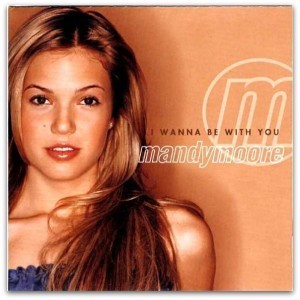 Today, Mandy Moore is primarily an actress and a singer of thoughtful, folky pop-rock. But that’s not how she started. She released her first album, So Real, at age 15 in 1999 and her second, I Wanna Be With You, in 2000 as part of the bubblegum teen pop boom of the era. In 2004, she told a reporter from the Houston Chronicle that those two albums were “Cr**, cr**, cr**. I apologize to anybody who bought them and wasted their money.”
Today, Mandy Moore is primarily an actress and a singer of thoughtful, folky pop-rock. But that’s not how she started. She released her first album, So Real, at age 15 in 1999 and her second, I Wanna Be With You, in 2000 as part of the bubblegum teen pop boom of the era. In 2004, she told a reporter from the Houston Chronicle that those two albums were “Cr**, cr**, cr**. I apologize to anybody who bought them and wasted their money.”Batman and Robin was so critically reviled and did so poorly at the box office that plans for a fifth Batman movie were scuttled (the franchise was later revived and rebooted with 2005’s Batman Begins). George Clooney starred as the Caped Crusader, but harbors no delusions about the film. He’s told the Boston Globe that he “killed the franchise,” and has remarked to numerous reporters that if anybody who saw the movie came up to him on the street and asked for their money back, he’d fork over the cash. (No word on if anybody’s actually done that.)
Sean Astin was among the many child stars of the 1985 adventure movie The Goonies. He and the other stars were also obligated to star in the Cyndi Lauper music video promoting the movie, “Good Enough.” In 2010, he apologized for his poor, lazy performance in the video (he was tired from shooting all day)…both to the public, and to Cyndi Lauper specifically.
The highly anticipated fourth Indiana Jones movie, Indiana Jones and the Kingdom of the Crystal Skull was finally released in 2008…to middling reviews. Shia LaBeouf played Indiana Jones’ son, and he took partial blame for the lackluster film. “You get to monkey-swinging and things like that and you can blame it on the writer and you can blame it on the director. But the actor’s job is to make it come alive and make it work, and I couldn’t do that. So that’s my fault. Simple.”
The post Sorry About the Terrible Entertainment appeared first on Uncle Johns Bathroom Reader.
May 27, 2014
It Only Happened Once: NBA Edition
Weird stuff that doesn’t happen everyday in basketball.
 Only team with three starters at the All-Star Game.
Only team with three starters at the All-Star Game. The 1982-1983 Philadelphia 76ers were one of the best teams in NBA history. Led by MVP Moses Malone and Julius Erving, they finished with a 65-17 record and only lost one playoff game en route to an NBA title. At that year’s all-star game, a (shared) record of four players were elected to represent the Eastern Conference in the All-Star Game, with a record three in the starting lineup: Malone, Erving, and Maurice Cheeks. (The fourth player was Andrew Toney.)
Only team to win 70 regular season games.
The 1995-96 Chicago Bulls finished with a record of 72-10 (and in the playoffs, they went 15-3 and won the championship).
Only person to win an NBA title, be named Most Valuable Player, be the All-Star Game MVP, win an Olympic Gold Medal, and be named Executive of the Year.
It’s not Michael Jordan—it’s ’60s and ’70s Lakers great Jerry West. The guard racked up nearly every accolade possible in the NBA. He won an NBA title as a player and general manager, and was the NBA Finals MVP in 1969—which his team didn’t even win. He’s also an Olympic gold medalist (1960) and its West’s silhouette that makes up the NBA logo.
Only team owner to be banned from NBA.
In April, the NBA banned Los Angeles Clippers owner Donald Sterling from the league for life, following several instances of racist behavior. Only two other owners of major American sports teams have been forced out of their leagues: Marge Schott of the Cincinnati Reds, after she made racist and anti-gay comments, and George Steinbrenner of the New York Yankees for several illegal financial dealings.
Only team owner to get a one-year suspension.
In 2000, Minnesota Timberwolves owner Glen Taylor earned a one-year hiatus and a $1 million fine for signing a player to a secret contract to get around salary cap restrictions.
Only time a fouled-out player was allowed to keep playing.
NBA teams can have a roster of 15 players, with 12 “actives” and three reserves in case of injuries. Last February, in a game against Cleveland, the injury-decimated Lakers were down to a team of only eight. A team has to have five players on the court, and that put the Lakers in trouble after Jordan Farmar left the game due to leg pain, Nick Young hurt a knee, and Chris Kaman fouled out. With four minutes left in the game, Robert Sacre fouled out, too. Due to a bizarre NBA rule, Sacre was allowed to stay in the game because otherwise the Lakers wouldn’t have had enough players. And somehow, the Lakers won the game, 119 to 108.
The post It Only Happened Once: NBA Edition appeared first on Uncle Johns Bathroom Reader.
The Return of America’s Most Notorious Theme Park
Are the horrifying tales surrounding New Jersey’s Action Park even true? In honor of its upcoming reopening, here’s a look.
Action Park first opened in Vernon, New Jersey, in 1978 and by the mid-1980s, drew more than a million visitors each year. Lured by catchy TV ads claiming that “the action never stops at Action Park!” thrill-seekers came from all over the Northeast to try out the park’s Alpine Slide and other rickety rides.
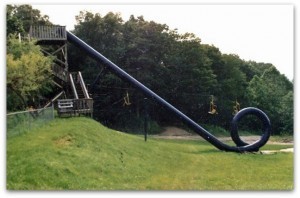 The most famously dangerous attraction was the Cannonball Loop, a water slide featuring a completely vertical loop. According to reports, staff members were offered $100 each to test it before it opened in 1985. Later that year, a safety commission shut down the Loop…after a single month in operation. A poorly designed skateboard park suffered a similar fate. Not shut down was the Tank Ride, which featured motorized mini-tanks that fired tennis balls, a crowd favorite despite the obvious safety hazards.
The most famously dangerous attraction was the Cannonball Loop, a water slide featuring a completely vertical loop. According to reports, staff members were offered $100 each to test it before it opened in 1985. Later that year, a safety commission shut down the Loop…after a single month in operation. A poorly designed skateboard park suffered a similar fate. Not shut down was the Tank Ride, which featured motorized mini-tanks that fired tennis balls, a crowd favorite despite the obvious safety hazards.
It was also around 1985 that Action Park earned the local nicknames “Traction Park” and “Class Action Park.” A nearby hospital attended to anywhere from five to 10 injured visitors on busy summer days, and lawsuits began to mount. The high accident rate eventually forced Vernon’s city council to fund an additional ambulance to keep apace with the park’s victims.
Despite its terrible safety record, the park was successful enough to spawn an offshoot location in Pennsylvania, which closed in 1991. The original Action Park went bankrupt and closed in 1996, having killed six visitors in 18 years. After some modifications, the park’s “Waterworld” section later reopened as the Mountain Creek Waterpark. The rest of Action Park faded into history for most, although a documentary called The Most Insane Amusement Park Ever was released in 2013. You can watch the whole video in the link above.
But even the scary parts of pop culture are subject to the hazy filters of nostalgia. The owners of the Mountain Creek Waterpark have decided to rename the facility Action Park, and its set to re-open on June 14. On the docket for the future: classic thrill rides that owners promise would be just like the ones that would’ve been found in the old Action Park.
The post The Return of America’s Most Notorious Theme Park appeared first on Uncle Johns Bathroom Reader.
May 23, 2014
A Symbolic Gesture
Two football players whose careers and lives were forever altered by injury…who still got to be part of the NFL, at least symbolically.
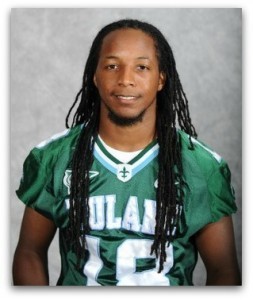 Following his senior season at Tulane in 2012, safety Devon Walker aimed to go pro, hopefully with the New Orleans Saints. Instead, he suffered a tragic spinal cord injury on the field when he collided with a teammate. It ended his season, and his playing career—and it paralyzed him from the neck down. Shortly after graduating from Tulane earlier this month, the Saints reached out to Walker. The team invited him to their preseason rookie camp…and then presented him with a ceremonial contract, ensuring that his dream of being a New Orleans Saint was fulfilled.
Following his senior season at Tulane in 2012, safety Devon Walker aimed to go pro, hopefully with the New Orleans Saints. Instead, he suffered a tragic spinal cord injury on the field when he collided with a teammate. It ended his season, and his playing career—and it paralyzed him from the neck down. Shortly after graduating from Tulane earlier this month, the Saints reached out to Walker. The team invited him to their preseason rookie camp…and then presented him with a ceremonial contract, ensuring that his dream of being a New Orleans Saint was fulfilled.Eric LeGrand was a star defensive tackle at Rutgers University. In 2010, his junior season, he collided with a kickoff returner for the opposing team so hard that two vertebrae were shattered. Doctors initially thought he would never gain momentum in his body below his neck ever again, and would require a respirator for the rest of his life. However, within a month, LeGrand was breathing on his own; three months after the injury, he’d regained movement in his shoulders. By the summer, he was moving his arms and was able to stand up. While he won’t play football again, it didn’t matter to the Tampa Bay Buccaneers. The team signed him to a symbolic contract in 2012 (the coach at the time was LeGrand’s coach at Rutgers, Greg Shiano). LeGrand even scored an endorsement deal with Subway.
The post A Symbolic Gesture appeared first on Uncle Johns Bathroom Reader.
Fact-or-Fake Friday: Senior Prank Edition
What follows are three stories about the traditional “senior prank.” Two of them are all two true; one, thankfully, isn’t—we made it up! Can you guess which one is bogus? The answer is at the end of the post.
A.
The typical senior prank is generally something light-hearted that involves minimal property damage, from toilet papering the high school to writing “seniors rule!” on the water tower. A Tennessee high school, however, was recently draped with roadkill as part of a prank by members of the graduating class. In trees around the school’s campus, administrators found two possums, a turtle, and four raccoons. (And for good measure, the culprit or culprits spray-painted dirty words on the grass.)
B.
A Chicago high school was subject to a bizarre senior prank for which more than 60 students were implicated—that’s how widespread the damage was. Bad words were spray-painted on walls, garbage tossed throughout the outside perimeter, classroom furniture was broken, stolen, and littered around the school, and pictures of teachers were found marked with cruel comments. The weirdest part: the entrance to the school was blocked with a baby’s crib, filled with live chickens.
C.
The senior prank at a rural Texas high school was one part normal, one part bizarre. The rafters and lockers in every hallway were draped in toilet paper, and the windows at the school’s entrance had been battered with eggs. That’s the “normal” part. The “bizarre” part: more than 40 cattle were found in the school’s gymnasium, auditorium, and cafeteria.
Want more of the patently untrue? Check out Uncle John’s Fake Facts. (Really!)
The post Fact-or-Fake Friday: Senior Prank Edition appeared first on Uncle Johns Bathroom Reader.
May 22, 2014
Where Everybody Still Knows Your Name
The last episode of Cheers aired in 1993, but if you’re still missing it, here are a few Norm-worthy Cheers bars you can visit in real life.
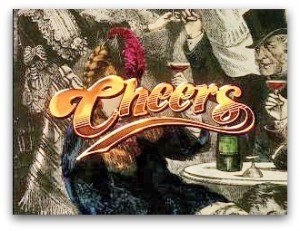 Cheers Beacon Hill, Boston
Cheers Beacon Hill, BostonThis Boston pub first opened as the Bull & Finch in 1969 and its exterior “played” Cheers during the show’s 11-season run—it was renamed Cheers Beacon Hill in 2003. The interior doesn’t look much like the bar on TV, but it does have a gift shop and a gigantic burger on the menu named Norm. In 2009, owner Thomas A. Kershaw courted controversy by firing Eddie Doyle, a beloved bartender that had worked there since 1974. It led to such outcry that a nearby city square was named in Doyle’s honor.
Cheers Faneuil Hall, Boston
Kershaw also owns this Cheers-themed eatery, which includes a nearly exact replica of the bar from TV. Several show props are also on display, including Sam Malone’s Red Sox jacket, Cliff’s mailman uniform, and Lilith’s “Eco-podi” outfit. The eatery also hosts live music and other performances several times a week, although most locals consider it a tourist trap. (It’s also got the Norm burger.)
Cheers airport bars
The immense popularity of the sitcom led to a small franchise of 15 Cheers-themed bars in airports located around the world. They featured replicas of the bar, in addition to two animatronic barflies named “Hank” and “Bob” that were clearly based on Norm and Cliff. They were programmed to have a funny, pre-recorded conversation every few minutes. Actors George Wendt and John Ratzenberger, who played the characters on the show, weren¹t amused by having their likenesses used without their permission—they sued, and settled out of court.
The post appeared first on Uncle Johns Bathroom Reader.
May 20, 2014
The Netflix Of…
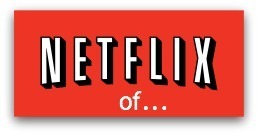 Netflix revolutionized the home video market, with a subscription-based mail order (and later streaming) plan of all-you-can-watch movies. It’s been so popular that many other industries have spawned their own use/return system. For example, have you heard of the Netflix of…
Netflix revolutionized the home video market, with a subscription-based mail order (and later streaming) plan of all-you-can-watch movies. It’s been so popular that many other industries have spawned their own use/return system. For example, have you heard of the Netflix of…
…Magazines.
In 2009, Time Inc. introduced Maghound, which offered consumers issues of three different magazines a month for $5, and they could pick totally different magazines each time. (The service shut down in 2012.)
…Books.
Oyster recently launched, offering all-you-can-read ebooks from a catalog of half a million for $10 a month.
…Coffee.
CUPS is a coffee subscription service available so far in only Israel and New York city. For $45, customers can get unlimited cups of coffee at participating locations.
…Clothes.
Why buy an expensive dress from a well-known designer or house if you’re only going to use it once (or if it’s too expensive?) Rent the Runway allows customers to rent a fancy dress each month for a set fee.
…Snack food.
For a small fee, Graze sends subscribers a small box of new and unusual healthy snack foods, such as granola bars and nuts. Cost: $6 a month.
…Nail polish.
Have you ever spent a bundle on a bottle of nice nail polish, only to get it home, use it once, and find the color doesn’t suit you? Lacquerous is a service that sends customers three nail polish samples each month for $15.
…Ties.
It’s like every month is Father’s Day at Fresh Neck, a company that delivers a brand new tie to anyone who pays $15 a month.
The post The Netflix Of… appeared first on Uncle Johns Bathroom Reader.
The Governor Saved My Life!
Sure, politicians can save lives by ordering a stay of execution, or allocating funds to hunger-fighting programs, for example. These two stories are a little more direct.
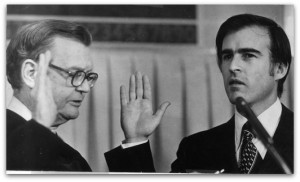 After graduating from a Catholic high school in California, Jerry Brown left for Santa Clara University, but dropped out after a year to join Sacred Heart Novitiate—the seminary. He wanted to be a priest. Brown was so committed to the sanctity of life that in 1960, the 22-year-old seminarian pleaded with the state’s governor to give a 60-day stay of execution to Caryl Chessman, a death row inmate scheduled to be executed. He wanted time to petition the state’s legislature to ban the death penalty outright. (The governor at the time was Brown’s father, Pat Brown, and the stay was delivered, but the death penalty was not banned in California, or at least it wasn’t until 1972. Three years later, Jerry Brown became California’s governor (and did so again in 2011).
After graduating from a Catholic high school in California, Jerry Brown left for Santa Clara University, but dropped out after a year to join Sacred Heart Novitiate—the seminary. He wanted to be a priest. Brown was so committed to the sanctity of life that in 1960, the 22-year-old seminarian pleaded with the state’s governor to give a 60-day stay of execution to Caryl Chessman, a death row inmate scheduled to be executed. He wanted time to petition the state’s legislature to ban the death penalty outright. (The governor at the time was Brown’s father, Pat Brown, and the stay was delivered, but the death penalty was not banned in California, or at least it wasn’t until 1972. Three years later, Jerry Brown became California’s governor (and did so again in 2011).In the 1990s, former doctor John Kitzhaber became the governor of Oregon, where he helped institute a statewide affordable health care plan. But he’s still a doctor at heart, and a hands-on one at that. In early May 2014, Kitzhaber’s motorcade was in downtown Portland when he noticed a woman laying on the ground, with a pedestrian trying to help her. Kitzhaber told his driver to pull over. While an associate called 9-1-1, the governor performed CPR on the unconscious woman. Paramedics soon arrived, and continued reviving the woman, who is expected to make a full recovery.
The post The Governor Saved My Life! appeared first on Uncle Johns Bathroom Reader.
May 19, 2014
Ask Uncle John Anything: Hot Dog!
Uncle John knows pretty much everything—and if he doesn’t, he heads his massive research library, or puts one of his many associates on the case. So go ahead: In the comments below, ask Uncle John anything. (And if we answer your question sometime, we’ll send you a free book!) This week’s question comes from reader Pat B., , who asks…
Why don’t McDonald’s and Burger King sell hot dogs?
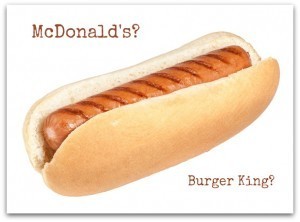 Memorial Day is almost here, and with it comes summer, and with that comes grilling season. It’s one of the unofficial “big three” barbecuing holidays of the summer, along with Independence Day and Labor Day. Nothing tastes better than a fire-grilled hot dog eaten in the warm sun. And maybe those summer weenie roasts are all the better because hot dogs are a special treat—you can find them ominously rotating for hours on end at a convenience store, or at a Nathan’s if you live on the East Coast, but other than that, hot dogs are conspicuously absent from the American burger-centric fast-food landscape.
Memorial Day is almost here, and with it comes summer, and with that comes grilling season. It’s one of the unofficial “big three” barbecuing holidays of the summer, along with Independence Day and Labor Day. Nothing tastes better than a fire-grilled hot dog eaten in the warm sun. And maybe those summer weenie roasts are all the better because hot dogs are a special treat—you can find them ominously rotating for hours on end at a convenience store, or at a Nathan’s if you live on the East Coast, but other than that, hot dogs are conspicuously absent from the American burger-centric fast-food landscape.
It hasn’t always been that way.
Ray Kroc didn’t start McDonald’s—he was a milkshake machine salesman who guided the company into the lucrative field of franchising the burger stand. In his 1977 memoir, Kroc wrote of his disgust and displeasure for selling hot dogs. “There’s no telling what’s inside a hot dog’s skin, and our standard of quality just won’t permit that kind of item.” Result: no “McHotDog.” Except there’s at least one McDonald’s outlet that does sell the McHotDog: the one inside of the SkyDome in Toronto, where the Blue Jays play.
Hot dogs used to be a regular menu item at Burger King, in the 1970s and 1980s. They stopped selling them in the late ‘80s because sales weren’t good.
The post Ask Uncle John Anything: Hot Dog! appeared first on Uncle Johns Bathroom Reader.
I Got My Robot Arm From ‘Star Wars’
Dueling with lightsabers can be dangerous…which is why both Darth Vader and Luke Skywalker had to rely on robotic limbs in the Star Wars movies. Those futuristic appendages were pure science-fiction…until now.
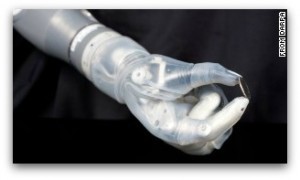 The FDA has given approval to the DEKA Arm System—next-level robotic limbs. With a $40 million grant from the U.S. Department of Defense, DEKA Research and Development Corp. took direct inspiration for its innovative prosthetics from the robo-hand that Luke uses to topple the Empire in Return of the Jedi.
The FDA has given approval to the DEKA Arm System—next-level robotic limbs. With a $40 million grant from the U.S. Department of Defense, DEKA Research and Development Corp. took direct inspiration for its innovative prosthetics from the robo-hand that Luke uses to topple the Empire in Return of the Jedi.
Designers of the arm (nicknamed “Luke”) hope that it will aid injured military veterans as well as civilians. So far, it’s worked wonders in early trials. The device, which took eight years to develop, has enabled 90% of test subjects to do stuff like pick up eggs, something they couldn¹t easily accomplish with more conventional prosthetics. They were also able to use a drill, operate a zipper ,and even handle a grape without squishing or dropping it.
Here’s how it works: The arm’s movements are controlled by a small computer processor. The person wearing it sends signals to the processor by contracting their muscles. The device’s various switches and sensors can execute ten different specific actions. As of now, it can be worn by people with limb loss at the shoulder joint, and mid or lower arm, but not at the elbow or wrist.
The arm also has the same weight, size, shape, and strength as the average adult arm. Even better though? It looks really cool.
The post I Got My Robot Arm From ‘Star Wars’ appeared first on Uncle Johns Bathroom Reader.



